You’re here for one of two reasons: you bought your child a pair of binoculars and have run out of adventure ideas, or you’re considering purchasing a pair of binoculars, but you’re not sure where to use them. Well, don’t worry, our readers have you covered.
We recently asked our readers about the adventures they plan to take their binoculars on and they responded with some fun ideas. If you’re not in the mood for reading, we’ve included a summarised list of ideas at the end of the article.
Exploring Flora and Fauna

“My toddler goes on a lot of nature walks with me. Our family is nature nuts, so we love exploring local flora and fauna. My two-year-old thoroughly enjoys looking through the binoculars for birds and spotting wildlife. And, when I get off the beaten path, he would direct me to the river so he can play in the sand and dip his toes in the water.” – Sarah.
Perhaps take your child on a family nature walk, like Sarah, and have a look at the local flora and fauna. You can use the binoculars as a way to encourage your child to spot and learn the different fauna species in a field. You can use this opportunity to teach them about the indigenous and alien species, the carbon cycle, how plants reduce the carbon dioxide in the atmosphere and create oxygen, and how they use the sun in photosynthesis.
If you have a little scientist, you could use this time to gather samples that your child can view under a microscope. This could be a great opportunity to create a fully engaged learning experience for your child. They can learn about the different kinds of cells, their purposes, and their structure. They can learn about perspective, that just because an object looks and acts one way from afar, does not mean it will look or behave the same when you zoom in.
Bird Watching
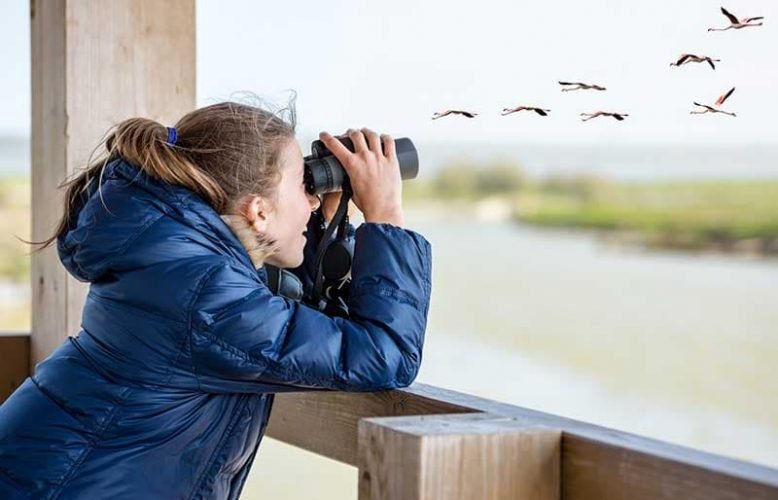
“My kids and I like to hike the greenway trail down the street from us. We take the binoculars with us to document the birds and other wildlife that we encounter. We keep a journal of the different birds that we see. It’s always exciting for them to start recognizing birds just on sight as well as by their sounds.
There are also many interesting plants, flora, and fauna to observe. It’s a hike, a nature walk, and an educational experience all in one. We get to meet many interesting people as well. Some are walking their dogs, some have children, some are rollerblading, and some are biking.” – Penny.
Penny had the great idea of keeping a bird journal. There are books available with all the known bird species. Consider getting one for you and your family if your young one loves spotting the different bird species. And keep track of the birds you have seen.
Birds are incredibly complex and intelligent animals. Your kids will just love to learn how to recognize the different species by their appearance and sounds, the different meanings of the bird’s body behavior and sounds, the different habitats, etc.
Wildlife Watching
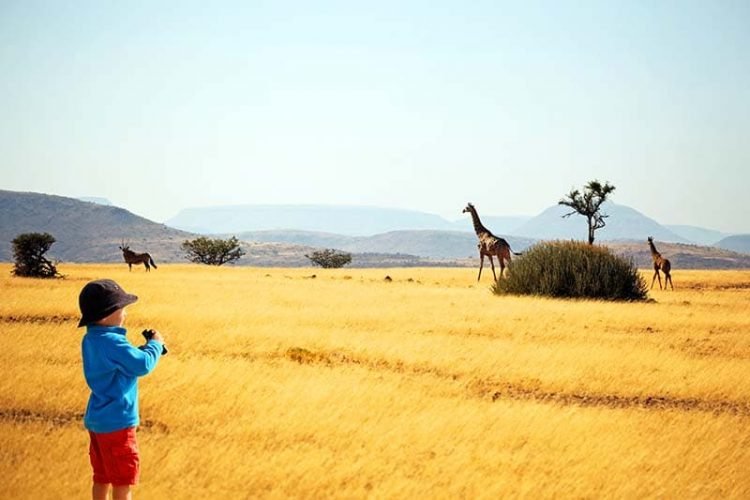
“I take the grandchildren on a beach walk where we are explorers. We try to discover the diverse fish, animal, vegetation, and insect world in our vicinity. We look for garfish skimming the water or the muskrat and beaver who show up occasionally. Looking up, we try to spot an Osprey, Gold Eagle, or the Bald Eagle who has decided to live near us. Spotting bullfrogs who try to camouflage is fun, or the toads who are peaking up at us and then hop away. The children do their best to try and catch one.
We look deep in the woods using binoculars, hoping to spot a deer and maybe a fawn. The binoculars are great for studying insects and their habits. They enable us to get a good, detailed look at the features. The closer looks help distinguish different varieties of caterpillars, spiders, and ladybugs. We take a close look at leaves and see how they differ. Maybe we can look up in the trees with our binoculars in hopes of seeing birds, perhaps a woodpecker or a porcupine sitting in the tree.” – Rhonda.
Wildlife watching is a great way to develop a love and understanding of animals and nature. Consider going to a reserve or animal conservation site to teach your child about the ecosystem, the food chain, the differences between predators and prey, what it means to be a carnivore, herbivore, and omnivore.
Teaching future generations about the world’s ecosystem is a great way to instill a need to protect and conserve it. It also allows you to teach your child why it is vital to preserve and cherish the environment.
During a Treasure Hunt

“My nephew recently turned four, and I love spending time with him. His genuine interest and curiosity, coupled with a healthy imagination, are so much fun to watch. We love to play pirates and dig for treasures in his turtle sandbox. We use the binoculars to spot where the treasures are and where we want to dig.
We take the binoculars around the neighborhood on a scavenger hunt to see what interesting things we can find, such as painted rocks or even the graffiti commissioned on a building nearby. Of course, we use binoculars to see the sky as we watch birds, especially geese that fly over quite often. At the very least, on rainy days, we just make goofy faces at each other with the binoculars while we’re spending time indoors.” – Billie.
Your child could be a real treasure hunter with this one. Or a pirate. They can be just like their favorite character from their storybook. Or like the villain from Aladdin, Jafar, stealing the jewels. Using the treasure hunt can be a great way to teach your child how to cross roads safely, how to navigate around your area, how to use the sun to tell time and direction.
To Spot Farm Animals
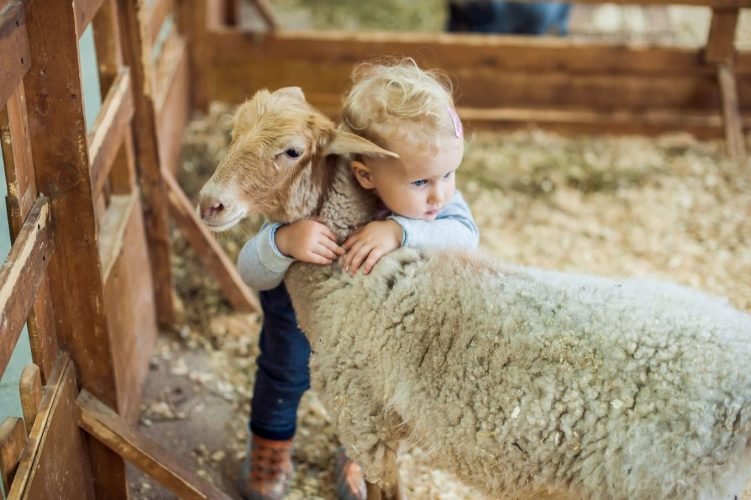
“My grandsons like hiking. They particularly like watching animals, such as birds and chipmunks. They have a large backyard and like to see the rabbits who visit often. They also live behind a government farm and often see cows and other farmyard animals. They go camping with their parents and get to enjoy even more experiences during their summers. They ski in winter and get to see the odd wildlife while on the ski hills.” – Susanna.
Farm animals are all so cute and cuddly, no matter how dirty. Using binoculars to spot the different farm animals is a great interactive way to teach your child the names and sounds of the various animals. You could take a chalkboard with them and demonstrate how to spell the names.
Going to different farms is a cool way to show your child where all the food in the stores comes from, how the plants and animals grow. It is up to you, the parents, about how detailed you want to explain how hamburger patties are made. Putting the potential hamburger incident aside, you can teach your child how the different farming styles positively and negatively impact the environment.
To Spot Man-Made Structures

“Besides wildlife, we use binoculars for gazing at the stars, full moon, and of course nature! We would use them for spotting distant tankers, leaping dolphins from the coastal trails, watching climbers inching their way up distant buttresses, and watching paragliders riding the thermals.” – Breeanna.
As Breeanna said, using binoculars to spot boats or paragliders is a lot of fun. But Billie also had the idea of running around town to find cool artwork to look at. You could take a pair of binoculars with you while traveling. You can use it to get a close-up of the Eiffel Tower, Big Ben, looking off the Great Wall of China, looking at the Buddhist temples in Thailand, etc.
If you have the opportunity to travel with your children, do it. It’s a great way for them to explore the world, learn about new cultures, meet new people, and of course, use their binoculars.
On Camping Trips
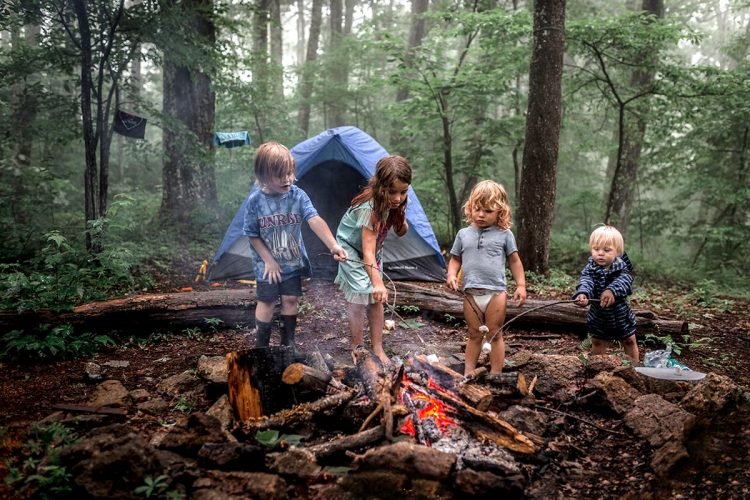
“We take our binoculars on our family road trips, where we do a lot of bird-watching! We are also lucky enough to camp near the ocean, so we do some wildlife viewing – maybe see some whales! We live in an area with many eagles, so we are always on the lookout for eagle nesting trees.” – Theresa.
“Our binoculars go camping, canoeing, biking, and all through the forest. We search for wildlife and all kinds of plants to investigate.” – Brenda.
Depending on where you’re camping, you could have the chance to see some wild animals that you don’t want to get too close to or scare off, like a bear or mountain lion. You can use your binoculars to enjoy the views around you, like a mountain range. Or, if you’re camping by a lake, you can zoom in on the boats and yachts on the lake.
On Hiking Trails

As a few of our readers have said, taking your binoculars on a hiking trail is a great way to zoom in on various things. You can find animals in the brush, birds in the sky, insects on the trees, people further up the trail.
It’s also a great place for your child to develop social skills by interacting with other hikers and their pets. Perhaps bring along a friend or two, and create a list of animals or items they need to try and find with their binoculars. Create a scavenger hunt for them.
On Road Trips
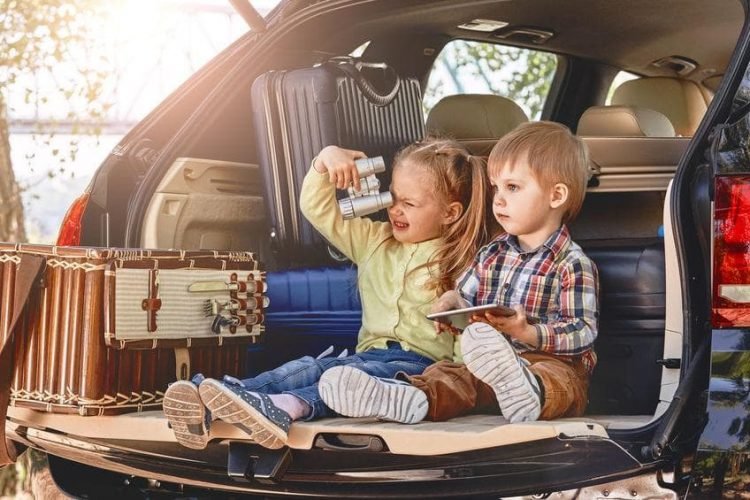
“We’re taking the binoculars on the many adventures we have planned this summer. We plan to camp at Yellowstone, where we use binoculars to look for wildlife. We plan to check out the awe-inspiring Great Salt Lake in Utah. We are also headed to the Oregon coast just before school starts. Binoculars are great for spotting sea lions or maybe a whale. There will be plenty of opportunities for bird watching. We also have numerous hiking trails and time at the lake planned in our beautiful home state, Idaho.” – Nichole.
“We love to take the grandkids exploring. I’m fortunate enough to live within driving distance from several state parks and the Great Lakes. I love to show them the birds in the sky and trees and the animals on the forest floor. To take them to the beach and show them the boats on the lake to see how huge they are and all the different sea birds. To pull over on a country road and show them the cows and horses roaming the fields.
To sit with them in my backyard and watch the bird feeder and have them see the hummingbirds coming to their feeder. To be able to wow them with the speed of the hummingbird’s wings. I think this would be a neat way to introduce them to a love of nature, give them the gift of curiosity about the world around them, and show the diversity of life in the forest and all around them. Just to see the smiles and look of awe as they see things up close.” – Ed.
Road trips are a great way to use your binoculars. Pulling off on the side of the road every now and then creates a nice break between the hours of driving and gives your kids something to look forward to. As Ed said, showing your kids the different animals and different environments can create curiosity and appreciation for the diversity around them.
Every place has its own unique thing, perhaps a species of animal you don’t get at home, like a zebra. Or a different kind of landscape, such as a mountain range or has ocean views.
To Explore the Surrounding Areas
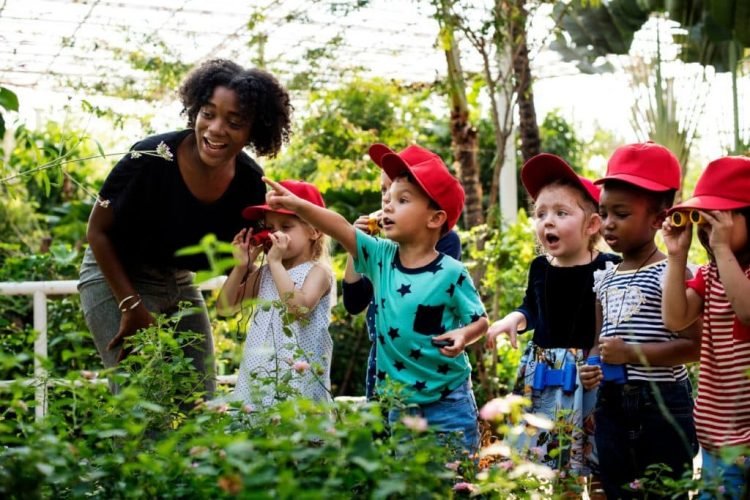
“I would love to take an adventure to the forge, an old forest in NJ, and it’s constantly changing. So many locations and unique animals to discover. Some locations are harder to reach, and getting to one side of the forest can be challenging. Water is taking over, and some areas have been falling apart. But using a pair of binoculars is a great way to get a glimpse of what is being missed without missing it!
I love to see the birds in the trees, like eagles and a few cranes. And I look for animals on the ground like lizards, snakes, frogs, and many more. Exploring the forge is not just a one-time event because there’s so much to see and find. So taking a few trips through these woods is a great adventure.” – Natosha.
You don’t always have to travel somewhere to use your binoculars. Sometimes the best discoveries are in your backyard. If you’re blessed to live in an area with a diverse ecosystem, have a look at nearby hiking trails, parks, or reserves you can visit with your binoculars.